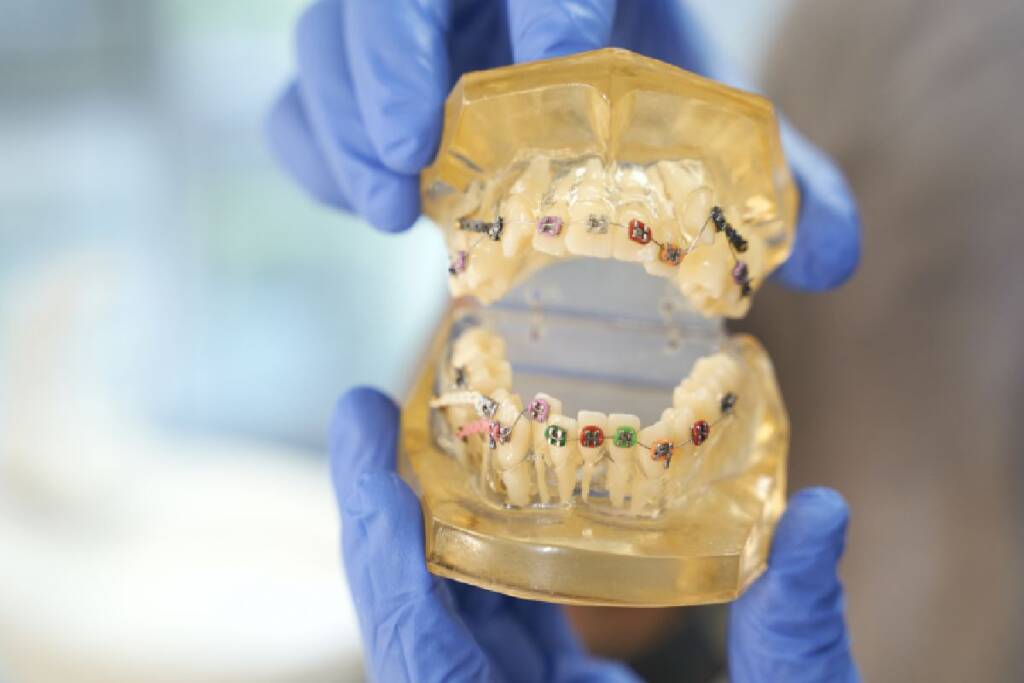
Invisalign has quickly become a favorite alternative to traditional braces, and for good reason. It’s discreet, removable, and ideal for a busy lifestyle. But if you’re considering Invisalign, you’re probably asking one important question: “Does it hurt?”
The short answer? A little, at times. But it’s manageable. In this article, we’ll walk you through what to expect in terms of pain or discomfort, when it’s normal, when it’s not, and how to keep the process as comfortable as possible.
Key Takeaways
✔ Invisalign may cause mild soreness, especially during the first few days of each tray
✔ Most discomfort is short-lived and easy to manage with simple strategies
✔ If pain persists or feels unusual, always consult your dentist
How Invisalign Works
Before diving into pain levels, it helps to understand how Invisalign actually functions. Invisalign uses a series of custom-made clear aligners that gradually move your teeth into their desired position. Each aligner is slightly different and worn for about 1–2 weeks, at least 20–22 hours a day.
The aligners work by applying gentle, consistent pressure to shift your teeth over time. That pressure is key to their effectiveness, but it’s also the reason why you might feel some soreness.
Is Invisalign Painful?
Most patients describe Invisalign discomfort as mild to moderate pressure, especially in the first few days of wearing a new set of aligners. It’s rarely sharp or severe.
Common Descriptions of Invisalign Pain:
- “A dull ache when biting down”
- “Pressure in the jaw and teeth”
- “A slight throbbing during the first night with new trays”
These sensations are completely normal and typically fade within a few days.
When to Expect Discomfort
Invisalign doesn’t hurt all the time, but there are specific points when you’re more likely to feel it:
- Initial adjustment: The first 1–2 weeks of starting Invisalign can be the most uncomfortable as your mouth adjusts
- Every new tray: Expect a small amount of pressure or soreness each time you switch to a new aligner
- Major movements: Rotating teeth, closing gaps, or shifting bite alignment may trigger a little extra tenderness
For most patients, the discomfort becomes easier to handle as the mouth adapts to the process.
What Kind of Pain Is Normal?
Some soreness is expected, and it’s a sign that the aligners are doing their job. Here’s what’s considered normal:
- General tooth and jaw tenderness
- Mild headaches or ear pressure (rare but possible)
- Minor gum or tongue irritation from tray edges
- Tightness when inserting or removing aligners
If the discomfort fits into these categories, there’s no need to worry, it’s all part of the journey.
What’s Not Normal (When to Call Your Dentist)
There’s a difference between normal soreness and something that needs attention. Contact your dentist if you experience:
- Sharp, throbbing pain that gets worse over time
- Bleeding, ulcers, or severe gum irritation
- Cracked or warped aligners that don’t fit correctly
- Pain that interferes with daily activities or sleep
Your dental provider can evaluate the issue and make adjustments if needed.
Tips for Managing Invisalign Discomfort
While some soreness is inevitable, there are simple ways to minimize it and keep treatment comfortable.
Helpful Tips:
- Switch aligners at night: You’ll sleep through the most intense adjustment period
- Use OTC pain relievers: Ibuprofen or acetaminophen can reduce discomfort
- Apply a cold compress: Helps with jaw soreness or tension headaches
- Use orthodontic wax: Soften rough edges or prevent irritation to cheeks and tongue
- Avoid hard, crunchy foods: Especially during the first 48 hours of a new aligner
A little preparation can go a long way in making the transition smoother.
Comparing Invisalign to Braces
No orthodontic treatment is completely painless. But how does Invisalign stack up against traditional braces?
Invisalign vs. Braces:
- Less irritation: No brackets or wires to poke your mouth
- Lower emergency risk: No broken hardware or loose wires
- More manageable pressure: Gradual adjustments instead of sudden wire tightening
Most patients report that Invisalign is far more comfortable overall.
8. Long-Term Outlook: Does It Get Better?
Absolutely. Most patients find that Invisalign discomfort decreases significantly as they go through treatment.
- Each tray becomes easier to adjust to
- You’ll know what to expect with each new aligner
- Soreness becomes shorter and less intense over time
Understanding the process makes it easier to manage expectations and stay on track.
Why Choose Humble Memorial Dental for Invisalign
At Humble Memorial Dental, we believe your smile transformation should be as comfortable as it is effective. That’s why we:
- Offer personalized Invisalign treatment plans
- Provide hands-on support and comfort strategies
- Use advanced scanning technology for ultra-precise aligner fitting
- Help you navigate insurance, financing, and scheduling with ease
We’ve helped countless patients through the Invisalign journey, and we’re here to support you, too.
Final Thoughts
Yes, Invisalign may come with some temporary discomfort, but it’s nothing you can’t handle. Most patients find the pressure mild, the soreness brief, and the results well worth it.
Remember: discomfort means progress. If you’re considering Invisalign, the team at Humble Memorial Dental is ready to help you achieve the healthy, confident smile you deserve.






